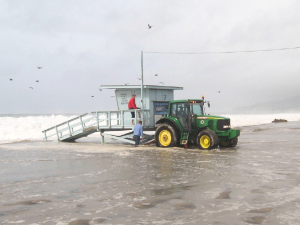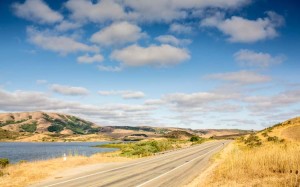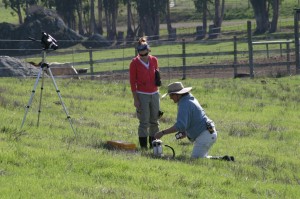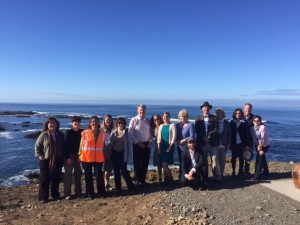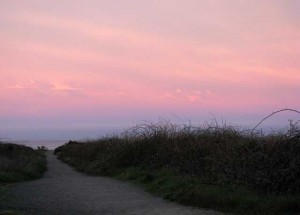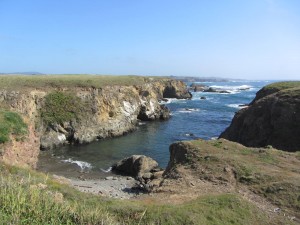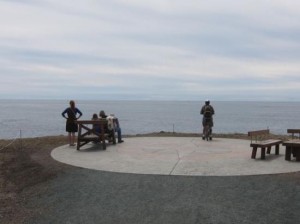Sea Otter Recovery Grants: Grant Applications Due September 1, 2020
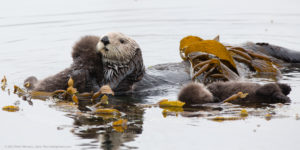
Photo: Mike Baird
The State Coastal Conservancy is now accepting applications for its 2021 Sea Otter Recovery Grants.
The grants will be funded by the California Sea Otter Fund, which is one of the state’s voluntary tax check-off funds that allows taxpayers to contribute additional money for use towards the recovery of California sea otter populations.
Public agencies and nonprofit organizations are eligible to apply for the grants. Eligible projects include research, science, protection, projects or programs related to the Federal Sea Otter Recovery Plan or improving the nearshore ocean ecosystem, including, but not limited to, program activities to reduce sea otter mortality. Each year, the Conservancy solicits proposals for the annual appropriation from the fund. This year the Conservancy has approximately $165,000 available for projects that meet the fund’s objectives. Applications are due September 1, 2020.
The application and more information is provided in the Sea Otter Recovery Proposal Solicitation.
For any further questions, please contact Hilary Walecka, Central Coast Project Manager, at hilary.walecka@scc.ca.gov.
6/25/20 Webinar: Greening without Gentrification
The Coastal Conservancy hosted this webinar on Thursday, June 25 2020 from 12-1pm.
A recording of the webinar can be found here: https://www.youtube.com/watch?v=7QP77Mwt4Wg
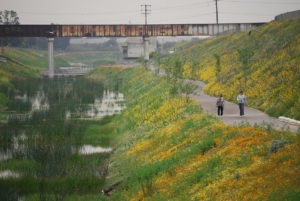
There is growing concern that conservation projects—from parks and open space to urban forestry and ecological reserves—can contribute to “green gentrification,” increases in housing prices and the influx of new, wealthier residents in low-income communities. Policymakers, planners, advocates for parks, conservation, and affordable housing, and local community-based organizations are increasingly recognizing this threat and taking action to limit displacement.
Researchers Alessandro Rigolon and Jon Christensen will present the results of their ongoing study “Greening Without Gentrification: Parks-Related Anti-Displacement Strategies Nationwide.” They will share key insights from the field about successful anti-displacement strategies that have a clear nexus with parks and conservation efforts.
Alessandro Rigolon is an Assistant Professor in the Department of City & Metropolitan Planning at the University of Utah. His research focuses on planning for green space and health equity, using an environmental justice lens, in a wide range of settings, including parks, greenways and trails, urban waters, street trees, and greened vacant lots. His current work covers three related areas: planning and policy determinants of equitable and inequitable park provision, drivers and resistance to gentrification fostered by new parks, and the public health impacts of green space on marginalized communities.
Jon Christensen teaches and conducts multidisciplinary research at UCLA focusing on equity and the environment, strategic environmental communication, and journalism, media, and storytelling. He is an adjunct assistant professor in the Institute of the Environment and Sustainability, Luskin Center for Innovation, Department of History, and Center for Digital Humanities at UCLA. He is a founder of the Laboratory for Environmental Narrative Strategies at UCLA.
California Sea Otter Fund: Grant Applications Due September 6, 2019

Photo: Mike Baird
The State Coastal Conservancy is now accepting applications for its 2020 Sea Otter Recovery Grants. The grants will be funded by the California Sea Otter Fund, which is one of the state’s voluntary tax check-off funds that allows taxpayers to contribute additional money for use towards the recovery of California sea otter populations.
Public agencies and nonprofit organizations are eligible to apply for the grants (see Sea Otter Proposal Solicitation for details). Eligible projects include research, science, protection, projects or programs related to the Federal Sea Otter Recovery Plan or improving the nearshore ocean ecosystem, including, but not limited to, program activities to reduce sea otter mortality. Each year, the Conservancy solicits proposals for the annual appropriation from the fund. This year the Conservancy has approximately $165,000 available for projects that meet the fund’s objectives. Applications are due September 6, 2019.
For more information, please refer to the Sea Otter Proposal Solicitation and the Conservancy’s Grant Application. For any further questions, please contact Hilary Walecka, Central Coast Project Manager, at hilary.walecka@scc.ca.gov.
Webinar: Meaningful Community Engagement
The Coastal Conservancy is hosting a webinar on Thursday, February 21st 2019 from 1-2 pm exploring meaningful community engagement in project development. Three speakers working on projects across the state will discuss how they’ve engaged communities to develop projects that benefit local communities. The speakers will discuss how their community engagement approach was developed, what strategies were used to increase participation, and what lessons were learned along the way.
Materials from the webinar:
- A recording of the webinar can be found by clicking here
- Draft guidance document “Tips for Meaningful Community Engagement“. Please provide any feedback on the draft guidance document to julia.elkin@scc.ca.gov.
About the Speakers:
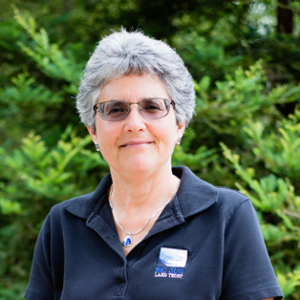
Rachel Saunders of Big Sur Land Trust will discuss the robust community engagement process that Big Sur Land Trust and their coalition of partners have undertaken to “co-create” a park and open space at Carr Lake in the heart of Salinas, Monterey County. The community engagement and planning process was pursued to ensure that community needs would be met while instilling a sense of ownership for residents.

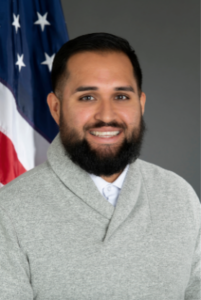 Michele Montano of the Council for Watershed Health and David Diaz of Bike San Gabriel Valley will discuss community engagement conducted during development of the Merced Avenue Greenway in the City of South El Monte in Los Angeles County.
Michele Montano of the Council for Watershed Health and David Diaz of Bike San Gabriel Valley will discuss community engagement conducted during development of the Merced Avenue Greenway in the City of South El Monte in Los Angeles County.
Climate Ready Webinar: Lessons-learned in Sea Level Rise Adaptation Planning
The California State Coastal Conservancy hosted a webinar for 140 people on December 2, 2016 to share examples and lessons learned from some of our sea level rise adaptation planning projects. This webinar highlighted three case studies:
– San Mateo (Hilary Papendick, San Mateo County)
– Monterey Bay (Kelly Leo, The Nature Conservancy)
– Los Angeles (Alyssa Newton Mann, USC Sea Grant)
Download a one page summary of the webinar.
Download slides from the webinar.
View a recording of the webinar.
The Conservancy at 40 Years: Marin County
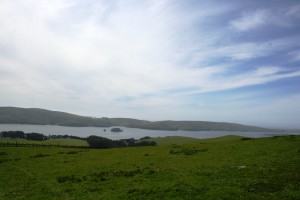 The next time you are traveling around west Marin, imagine the expansive rolling hills covered with thousands of homes and highways instead of family farms. That was the future for many of the ranches and farms of west Marin County if concerned citizens hadn’t banded together to protect Marin’s 150-year old farming heritage. Approximately 40 percent (120,000 acres) of Marin County is working ranch lands, including grazing for beef and dairy cattle, and small crop farms for produce, olives, and wine. Most of these ranches are owned and run by multi-generational family farmers.
The next time you are traveling around west Marin, imagine the expansive rolling hills covered with thousands of homes and highways instead of family farms. That was the future for many of the ranches and farms of west Marin County if concerned citizens hadn’t banded together to protect Marin’s 150-year old farming heritage. Approximately 40 percent (120,000 acres) of Marin County is working ranch lands, including grazing for beef and dairy cattle, and small crop farms for produce, olives, and wine. Most of these ranches are owned and run by multi-generational family farmers.
In the late 1960s, Marin County had approved zoning and planning changes that would allow for a city with a population of 125,000 on the shores of Tomales Bay and multi-lane highways transecting the country side, creating a bedroom community for city commuters. After years of opposition, the County rescinded its plan. But with the pressure remaining from outside interests to buy individual ranches for estate homes, and increasing economic pressures on ranch operations, many ranchers faced selling the family farm for top dollar. In response to the threat to a way of life, ranchers and environmentalists founded the Marin Agricultural Land Trust in 1980 to buy easements to provide economic boost for farms and protect them forever from development. MALT acquired its first easement in 1983 with funding from the Conservancy. Since then, MALT has acquired 76 easements and protected over 47,000 acres, and of that the Conservancy has granted nearly $12 million to MALT help acquire 22 easements and protect nearly 14,000 acres.
In addition to protecting ranches from development, the Conservancy has partnered with the Marin Resource Conservation District since 2000 to enhance aquatic, salmonid and riparian habitat on west Marin Ranches. The Conservancy has funded projects to reduce erosion, restore riparian tree corridors, enhance fish habitat, and enhance grazing land on several Tomales Bay-draining ranches. In the face of prolonged droughts and increasing temperatures, the RCD is undertaking an innovative approach to improving water retention on ranches and permanently sequestering carbon in soils. In 2013, the Conservancy funded a pilot study and planning effort by RCD to create ‘Carbon Farming’ plans for Marin ranches. The plans outline ranch practices that will improve ranch productivity and sequester carbon in grasslands.
For more information about MALT: http://www.malt.org/home
For more information about Marin RCD and Carbon Farming: http://www.marinrcd.org/carbon-farms/
Photos by MALT, Lech Naumovic, and the Marin RCD
The Conservancy at 40 Years: Fort Bragg
How many stretches of the California Coastal Trail feature a dynamite shack? Fort Bragg may have the only one in California! The innocuous looking concrete structure stands on the edge of the bluff in Noyo Headlands Park, the home of the city’s newly opened four mile Kah Kahleh trail, part of the Coastal Trail. The shack once housed the explosives used to break up logjams on the Noyo, Ten Mile, and other rivers and ensure a steady flow of logs to the mill that was built here in 1857. As you stand on the edge of the bluff today, the waves crashing on the offshore rocks and the cries of the seagulls are the loudest sounds you’ll hear. It’s hard to imagine the sights and sounds of the busy lumber mill that employed many of Fort Bragg’s residents until Georgia Pacific shut it down in 2002.
The mill’s closure was a challenge and an opportunity for the City, and it turned to the Coastal Conservancy to help plan for the future. A Conservancy planning grant helped the community look at the whole mill site, much of which will someday become residential and commercial areas. Over 300 people participated in the planning process. One of the biggest ideas to emerge from the process, and the first one to become reality, was Noyo Headlands Park. The Park is made up of about 100 acres of coastal prairie, beaches and bluff. The community realized that the Park would be not just a tremendous amenity for City residents, but would also help Fort Bragg transition from a resource-based economy to one where tourism was much more important. The park, and the coastal trail that runs through it, open miles of Fort Bragg’s coastline that had been closed to the public for more than a century.
The City acquired the parkland from Georgia Pacific in 2009 with the help of a $4.1 million grant from the Conservancy. Detailed planning for the coastal trail followed soon after the acquisition, with more community participation. Cleaning up hazardous waste left behind by the mill was one of the biggest challenges, and many options were considered, including using oyster mushrooms to break down dioxins left on the site. Finally the parkland was clean, plans were in place, and permits were in hand. With funding from the Conservancy, State Parks, and Caltrans, the City started construction on the trail in 2014. Two years later, the 4.5 mile trail is complete and is already well used by people of all ages, from seniors in wheelchairs to little kids on scooters. You can make your way down the cable steps to a little pocket beach, contemplate your mortality by the historic Fishermen’s Cemetery, climb to the top of Johnson Rock, and watch the water churn in Skip’s Punchbowl. Or just take a seat on one of the many artistic benches made by local artisans- I like the one shaped like a whale myself- and enjoy the view.
The Conservancy at 40 Years: The Eel River
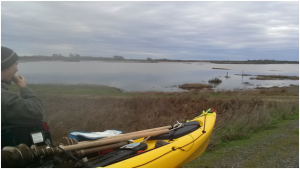 Wild and untamed, the Eel River is California’s third largest river system. Once the fourth largest producer of salmon on the Pacific Coast, its salmon runs once exceeded one million fish per year. From headwaters to the sea, the Coastal Conservancy and its partners have worked hard to restore fisheries, protect working lands and enhance the beauty and agricultural viability of this region.
Wild and untamed, the Eel River is California’s third largest river system. Once the fourth largest producer of salmon on the Pacific Coast, its salmon runs once exceeded one million fish per year. From headwaters to the sea, the Coastal Conservancy and its partners have worked hard to restore fisheries, protect working lands and enhance the beauty and agricultural viability of this region.
Since awarding the Humboldt Resource Conservation District its first grant in 1990 to work on the Salt River in Ferndale, the Coastal Conservancy has played a pivotal role in advancing landscape scale, ecosystem and agricultural enhancement projects to the fertile Eel River Delta. Now entering its fifth construction season, the Salt River Ecosystem Restoration Project has restored 326 acres of salt marsh, 94 acres of riparian habitat, 10 miles of river and slough habitat, 16 acres of freshwater wetlands and 750 acres of productive pasture in Ferndale that now drains effectively through a restored tidal slough system.
Now the Conservancy is leading a similar project comprising 2,000-acres within the nearby historic Centerville Slough. The Eel River Estuary and Centerville Slough Project seeks to achieve similar benefits for agriculture, while also restoring more than 100 acres of salt marsh and several miles of tidal slough that has filled with sediment. In addition, this project would restore fish passage into the newly restored slough system following more than 100 years of closure to aquatic life.
On the north side of the Eel Delta, the Coastal Conservancy is working closely with our partners at the California Department of Fish and Wildlife and Ducks Unlimited to develop a similar enhancement project at Department of Fish and Wildlife’s Ocean Ranch property.
This is a great time for the Eel River!
Five Year Commemoration of The Cedars Acquisition in Sonoma County
The Cedars supports some of the most unique and extremely unusual botanical, geological and aquatic resources on the planet. Peridotite mantle rock that normally rests 3 to 70 miles below the earth’s surface and serpentine soils make this ultra-basic environment home to at least eight endemic plant species. In 2011, the Conservancy partnered with the Sonoma Land Trust, Save the Redwoods League, and the Gordon and Betty Moore Foundation to purchase the 540 acre property and transfer it the U.S. Bureau of Land Management for permanent protection within its adjacent Area of Critical Ecological Concern.
Check out the guidebook and five year commemoration here: http://online.flipbuilder.com/opcf/iyor/#p=1
Latest News
- Press Release: Coastal Conservancy Awards over $40 million for coastal access, restoration, and climate resilienceOakland, CA (4/18/2024) – Today, the Board of the State Coastal Conservancy approved grants totaling over $40 million for coastal access, restoration, and climate resilience. Among the grants awarded today are: A grant of up to $6,000,000 to Humboldt County Resource Conservation District to undertake the North Coast Wildfire Resilience Planning and Implementation Grant Program, which […] (Read more on Press Release: Coastal...)
- Sea Otter Recovery Grants RFP Now Open!The California State Coastal Conservancy announces the availability of grants to public agencies, tribes and nonprofit organizations for projects that facilitate the recovery of the southern sea otter along California’s coasts. The California Sea Otter Fund is one of the state’s tax check-off funds that allows taxpayers to voluntarily contribute to the recovery of California’s […] (Read more on Sea Otter Recovery...)
- Coastal Conservancy Public Meeting in Oakland – April 18Meeting Notice Douglas Bosco (Public Member), Chair Marce Gutiérrez-Graudiņš (Public Member), Vice Chair Joy Sterling (Public Member) Jeremiah Hallisey (Public Member) Wade Crowfoot, Secretary for Natural Resources; Bryan Cash and Jenn Eckerle (Designated) Caryl Hart, Coastal Commission Chair; Madeline Cavalieri (Designated) Joe Stephenshaw, Director, Department of Finance; Michele Perrault (Designated) Senate Representatives Benjamin Allen (District […] (Read more on Coastal Conservancy Public...)
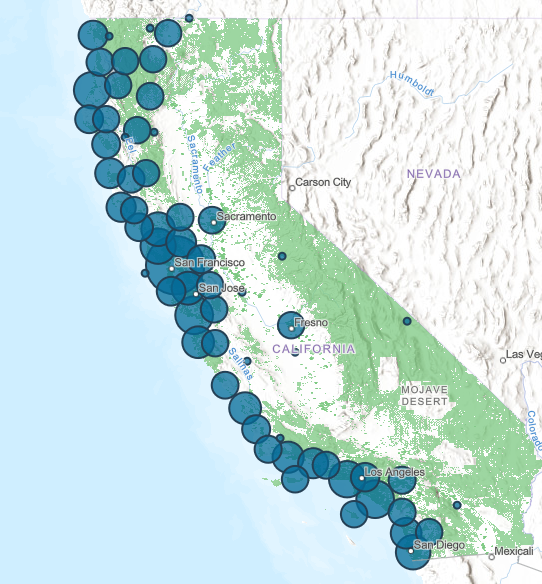
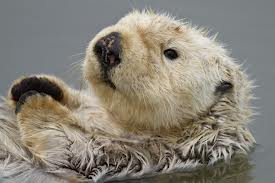 Help Save Sea Otters at Tax Time
Help Save Sea Otters at Tax Time


